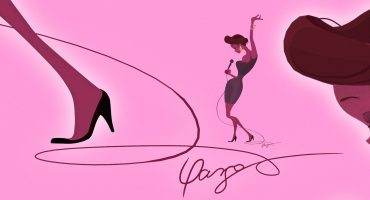Hi, I’m Philippe Graindorge aka Gerpho, and I’m a professional aerial photographer, and more recently a professional 3D photographer. I “3D-shoot” monuments (many nice “chateaux” here in Perigord, France), towns and landscapes, but also smaller things like statues. The “something small” challenge was a challenge indeed. How small an object could I 3D scan?
It happened that my son brought home this Cicada exosketeton (or exuvia) some time before, so I decided to try with this. It’s roughly 20mm long.
My two main concerns when shooting small objects are: how can I shoot the object from all sides and how can I obtain sharp photos?
The first question is certainly the most tricky. One way to go, is to glue the object on some sort of thin prop, the prop will be included in the 3D model and can be removed by post processing (check for example the very smart “ninja banana” by @R0m1R).
I couldn’t do this, the object was much too fragile since it’s only the thin “skin” of the insect. The method I will describe in detail further down was to shoot a series of photos on a clean white background, turn the object over to shoot another series, and do this several times. (Note: the featureless background is most important to avoid confusing the reconstruction software with background instead of the object.)
In practice, I use a small graduated turntable, set the object on the turntable and set the camera on a tripod, so that the axis of the camera is at 45° with respect to the axis of the tuntable. With this setup, and for small objects, the only visible background is the upper surface of the turntable which is usually much larger than the object I shoot. Mine is made of white laminate which is absolutely featureless. But I sometimes use a piece of white paper secured to the turntable, which is fine too.
Then I shoot 30 evenly spaced photos. The diagram below shows the position of the camera for each photo, with respect to the cicada, i.e. assuming the cicada is steady, and the camera rotates around it (in reality it’s the other way round). We will use this representation for all the following pictures.
However, with this set of pictures one only obtains views of the top of the insect, and we need to shoot sideways and underneath. This has to be done carefully: if I just flip the object upside down and shoot a second series, there will not be enough overlap between the first and the second series and reconstruction will fail.
Here is how I solve this problem : once the first series finishes I flip the object by 90° only (i.e. lay it on its side), and shoot a second series of photos, as below.
Now if I combine these two series into one single diagram it will look like this (remember we now assume the camera moves around the steady insect):
Because of the angles we used in the setup, there are a few photos from both series with almost the same point of view so that they overlap very well. These are the important ones: they enable the software to automatically connect the two series:
I do this two more times, so that eventually, I obtain four series of interconnected photos:
Then all I have to do is input these into my favorite software (namely ContextCapture ) and wait for the 3D model to be produced.
That was the difficult part.
Of course, I have to make sure to begin with that all my photos are really sharp, so that I don’t lose any of the details in the model. I must now describe the rest of my equipment: my Nikon D800 camera is equipped with a Nikkor 60mm macro lens. This lens has two important properties: it can focus real close so that one can obtain 1:1 magnification, and therefore capture the smallest details. The second feature is that I can close the aperture down to f:60. This leads to a huge depth of field, which is most important to obtain good sharpness in most of the picture. Of course, with such a small aperture, the exposure times are quite large (several seconds), but that’s not a problem, because the camera is on a tripod, I have a remote control on the camera, and the insect doesn’t move much!! Note that this method is the “easy” way to go. The tough method is known as “focus stacking”, and provides even better results without having to manage depth of field ; refer to @Rigsters’ beautiful scans (such as the cicada here) for a detailed description.
When I post my outdoor models I usually select “Shadeless” Shading, because they come with their own natural lighting. In this case, I wanted to render the plasticky impression of the real exuvia (or shell). To do this, I selected the PBR mode, adjusted a few light sources and added some “Specular F0” and “Glossiness” in the material section. I had to play around with the different parameters to get the desired rendering. And finally here’s the resulting 3D model :








